If you’ve ever wondered about the lifespan of roofs, you’ve come to the right place. Just like the different materials used in construction, roofs have their own unique timeline. So, let’s dive in and explore the longevity of various roof types.
From sturdy metal roofs that stand the test of time to the ever-reliable shingles and tiles, we’ll uncover the secrets behind their endurance.
Get ready to discover how long these roofs typically last and gain some insights into the fascinating world of roofing longevity.
Types of Roofs and How Long Do They Last | Mr. Roofer
There are various types of roofs available, and their lifespans can vary based on factors such as material quality, installation, maintenance, and environmental conditions.
Here’s a breakdown of some common types of roofs and their average lifespans:
Choice of Roofing Materials
1. Metal Roofs
Metal roofs are renowned for their exceptional durability and longevity. Here’s a closer look at why metal roofs are considered a long-lasting roofing option:
1.1 Durability and Longevity Of Metal Roofs
Metal roofs are designed to withstand harsh weather conditions, including heavy rain, snow, hail, and high winds. They are highly resistant to fire, rot, insect damage, and mildew, which can significantly extend their lifespan.
In addition, metal roofs have excellent strength and can handle impact from falling debris or tree branches better than other roofing materials.
1. 2 Average Lifespan of Metal Roofs:
On average, metal roofs can last anywhere from 40 to 70 years or even more with proper installation and maintenance.
The lifespan of metal roofs can also vary depending on factors such as the type of metal used (e.g., steel, aluminum, copper), coating quality, and environmental conditions.
1.3 Benefits of Metal Roofs
Longevity
Metal roofs offer one of the longest lifespans among roofing materials, reducing the need for frequent replacements.
Energy Efficiency
Metal roofs reflect sunlight, reducing heat absorption and keeping the building cooler, leading to potential energy savings.
Low Maintenance
Metal roofs require minimal maintenance, mainly consisting of occasional inspections and gutter cleaning.
Environmentally Friendly
Metal roofs are often made from recycled materials and are fully recyclable at the end of their life cycle, making them an eco-friendly choice.
1.4 Drawbacks of Metal Roofs
Higher Initial Cost: Metal roofs generally have a higher upfront cost compared to other roofing materials, which can deter some homeowners.
Noise Concerns
Without proper insulation, metal roofs can produce more noise during rain or hailstorms. However, insulation materials can mitigate this issue effectively.
Expansion and Contraction
The metal expands and contracts with temperature fluctuations, which, if not accounted for during installation, can potentially lead to issues like loose fasteners or leaks. However, professional installation techniques can address this concern.
2. Shingles: The Most Common Choice
Asphalt shingles are the most popular roofing material due to their affordability, versatility, and ease of installation.
Here’s what you need to know about the lifespan of asphalt shingle roofs, factors that can impact their longevity, and tips for prolonging their lifespan:
2.1 The Lifespan of Asphalt Shingle Roofs
Average Lifespan
Asphalt shingle roofs typically last between 20 to 30 years.
Shingle Quality
The quality of the shingles can vary, with higher-quality shingles having a longer lifespan.
Climate
Extreme weather conditions, such as heavy rain, hail, high winds, and temperature fluctuations, can impact shingle lifespan.
Maintenance
Regular maintenance and prompt repairs can extend the lifespan of shingle roofs.
2.2 Factors Affecting Shingle Lifespan
Installation
Proper installation techniques, including adequate ventilation and following manufacturer guidelines, can significantly impact the lifespan of shingle roofs.
Roof Pitch
The slope of the roof can affect shingle’s lifespan. Steeper roofs tend to have better water runoff and ventilation, which can help prolong shingle life.
Sun Exposure
Roofs exposed to intense sunlight for prolonged periods may experience more significant wear and degradation, reducing shingle lifespan.
2.3 Tips for Prolonging Shingle Roof Life
Regular Inspections
Conduct visual inspections of the roof to identify and address any issues promptly.
Maintain Gutters
Keep gutters and downspouts clear of debris to prevent water backup, which can damage shingles.
Clean Moss and Debris
Remove moss, leaves, and other debris that can accumulate on the roof, as they can trap moisture and accelerate shingle deterioration.
Address Repairs Promptly
Repair damaged or missing shingles promptly to prevent water infiltration and further damage.
Proper Ventilation
Ensure proper attic ventilation to minimize heat buildup, which can contribute to shingle deterioration.
3. Roof Tiles: A Timeless Option
Roof tiles, including clay, concrete, and slate, have been used for centuries and are known for their durability and aesthetic appeal.
Let’s explore the durability of different types of roof tiles, variations in their lifespan, and the advantages and maintenance considerations for tile roofs:
3.1 The Durability of Roof Tiles
Clay Tiles
Clay tiles are renowned for their durability and can withstand harsh weather conditions, including high winds, rain, and extreme temperatures.
Concrete Tiles
Concrete tiles are highly durable and resistant to fire, insects, and rot. They can withstand impacts better than other roofing materials.
Slate Tiles
Slate tiles are incredibly durable and have a long lifespan. They are resistant to fire, rot, and insects, making them a popular choice for premium roofing.
3.2 Lifespan Variations Among Roof Tiles
Clay Tiles
Clay tiles can have a lifespan ranging from 50 to over 100 years, depending on the quality of the tiles and maintenance practices.
Concrete Tiles
Concrete tiles generally have a lifespan of 30 to 50 years, but higher-quality tiles can last even longer.
Slate Tiles
Slate tiles are the most durable and can last for 100 years or more when properly maintained.
3.3 Advantages of Tile Roofs
Longevity
Tile roofs offer exceptional longevity, providing a durable and long-lasting roofing solution.
Aesthetics
Roof tiles are available in various colors, styles, and textures, allowing homeowners to achieve a timeless and elegant look for their homes.
Fire Resistance
Roof tiles, especially clay, and concrete, offer excellent fire resistance, providing added safety to the property.
Low Maintenance
Tile roofs require minimal maintenance, primarily consisting of periodic inspections and gutter cleaning.
Environmentally Friendly
Many roof tiles, especially clay, and slate, are made from natural materials and are recyclable at the end of their lifespan.
3.4 Maintenance Considerations for Tile Roofs:
Inspections
Regularly inspect the roof for cracked or damaged tiles and replace them promptly.
Cleaning
Remove debris, leaves, and moss from the roof to prevent water retention and potential damage.
Gutters and Flashing
Ensure proper gutter functioning and inspect flashing to prevent water leaks.
Professional Maintenance
Engage professional roofers to conduct regular inspections and maintenance to address any potential issues.
4. Rubber Roofs: A Flexible Solution
Rubber roofs, also known as EPDM (ethylene propylene diene terpolymer) roofs, have gained popularity for their flexibility, durability, and cost-effectiveness.
Let’s highlight the lifespan of rubber roofs and explore the benefits and maintenance requirements associated with this roofing option:
4.1 The Lifespan of Rubber Roofs
Average Lifespan: Rubber roofs can last between 30 to 50 years with proper installation and maintenance.
High-Quality Materials
The lifespan of rubber roofs can vary depending on the quality of the EPDM membrane used.
Environmental Factors
Exposure to extreme weather conditions, such as UV radiation, heat, and hail, can affect the lifespan of rubber roofs.
4.2 Benefits of Rubber Roofs
Flexibility
Rubber roofs are highly flexible and can expand or contract with temperature changes without cracking or splitting.
Durability
Rubber roofs are resistant to hail, wind, and UV radiation, making them a reliable roofing solution.
Cost-Effectiveness
Rubber roofs are relatively affordable compared to other roofing materials, making them an attractive option for budget-conscious homeowners.
Energy Efficiency
Rubber roofs have excellent insulation properties, which can contribute to energy savings by reducing heating and cooling costs.
Low Maintenance
Rubber roofs require minimal maintenance. Periodic inspections and cleaning are generally sufficient to keep them in good condition.
4.3 Maintenance Requirements for Rubber Roofs
Regular Inspections
Conduct visual inspections of the roof to check for any signs of damage, such as punctures, tears, or loose seams.
Clean Debris
Remove leaves, branches, and other debris from the roof surface to prevent clogging and water pooling.
Proper Drainage
Ensure that the roof’s drainage system, such as gutters and downspouts, is clear and functioning properly.
Address Repairs Promptly
If any damage or issues are identified, have them repaired promptly to prevent further damage to the rubber membrane.
Professional Maintenance
Consider engaging professional roofers for periodic inspections and maintenance to ensure the longevity and performance of the rubber roof.
5. Roof Cement: A Temporary Fix
Roof cement, also known as roofing sealant or mastic, is commonly used as a temporary solution to address roof leaks or seal gaps in roofing materials.
Let’s discuss the lifespan and limitations of roof cement, as well as the importance of addressing underlying issues:
5.1 The lifespan of Roof Cement
Lifespan
Roof cement is not a permanent roofing solution and typically has a lifespan of around 3 to 5 years, depending on weather conditions and exposure.
Temporary Nature
Roof cement is designed as a short-term fix to provide immediate protection against leaks or to seal small gaps in roofing materials.
Susceptibility to Weathering
Over time, roof cement can degrade due to exposure to UV rays, temperature changes, and moisture, losing its effectiveness as a sealant.
Limited Flexibility
Roof cement is not as flexible as other roofing materials, making it prone to cracking or breaking under temperature fluctuations or structural movements.
Potential for Discoloration
Roof cement may discolor over time, affecting the appearance of the roof.
5.2 Importance of Addressing Underlying Issues:
Temporary Solution
Roof cement should be viewed as a temporary fix to provide immediate relief from leaks. It is crucial to address the underlying roofing issues to prevent further damage.
Hidden Damage
Roof leaks are often symptoms of underlying roofing problems, such as damaged flashing, deteriorated shingles, or compromised roofing materials. Failure to address these issues can lead to more significant and costly damage.
Structural Integrity
Ignoring underlying roofing issues can jeopardize the structural integrity of the roof and the entire building. Water infiltration can cause wood rot, mold growth, and damage to insulation, ceilings, and walls.
Long-Term Cost
Continuously relying on roof cement as a temporary fix can result in higher costs in the long run. It is more cost-effective to address the root cause of the problem and invest in proper repairs or a roof replacement.
6. Solar Panels and Roof Longevity
Solar panels are a popular and environmentally friendly energy solution that can be installed on rooftops.
Let’s explore how solar panels affect the lifespan of roofs, their own lifespan, and considerations for maintaining solar panel roofs:
6.2 The lifespan of Solar Panels
Average Lifespan: Solar panels typically have a lifespan of 25 to 30 years or more, depending on the quality of the panels and their maintenance.
Degradation Rate: Solar panels gradually experience a decrease in efficiency over time due to a natural degradation process. However, most reputable manufacturers offer warranties that guarantee a certain level of power output for a specified period.
6.3 Impact on Roof Longevity
Roof Protection
Solar panels act as a protective layer over the roof, shielding it from direct sunlight, rain, and other weather elements. This can help extend the lifespan of the underlying roofing materials.
Reduced Wear and Tear
Solar panels can reduce the wear and tear caused by UV radiation and extreme temperature fluctuations, which are known to deteriorate roofing materials over time.
Roof Integrity
Proper installation of solar panels includes securing them to the roof using appropriate mounting systems. When installed correctly, solar panels can enhance the structural integrity of the roof by providing additional support and stability.
6.4 Considerations for Maintaining Solar Panel Roofs
Regular Inspections
Conduct routine inspections of both the solar panels and the roof to identify any issues such as loose connections, damaged panels, or potential leaks.
Keep Panels Clean
Regularly clean the solar panels to ensure optimal performance. Dust, dirt, leaves, or bird droppings can reduce the efficiency of the panels, so gently washing them with water or using a soft brush may be necessary.
Monitoring Power Output
Track the power output of the solar panels to identify any significant drops in performance, which may indicate the need for maintenance or panel replacement.
Professional Maintenance
Consider engaging professional solar panel and roofing experts for periodic inspections and maintenance to ensure the panels and the roof are in good condition.
Conclusion
In conclusion, the lifespan of roofs varies depending on the type of roofing material used, environmental conditions, installation quality, and maintenance practices. Metal roofs are known for their durability and can last for several decades, while asphalt shingle roofs typically have a lifespan of 20 to 30 years. Roof tiles, including clay, concrete, and slate, offer longevity ranging from 50 to over 100 years. Rubber roofs have an average lifespan of 30 to 50 years.
It is important to note that these are general estimates, and individual roofs may have variations in lifespan based on specific circumstances. Factors such as weather conditions, regular maintenance, and addressing underlying issues play a crucial role in extending the lifespan of any roof.Regardless of the types of roofs, regular inspections, timely repairs, and proper maintenance are essential for ensuring its longevity. Keeping the roof clean, addressing any damage promptly, and maintaining proper ventilation and drainage are key practices for maximizing the lifespan of a roof.
Solar panels installed on roofs typically have a lifespan of 25 to 30 years or more. Regular maintenance and inspections are important to ensure optimal performance throughout their lifespan.
Roof cement, also known as roofing sealant or mastic, is a temporary solution. Its lifespan is around 3 to 5 years, depending on weather conditions and exposure.
The lifespan of a roof on a manufactured home is similar to traditional homes, typically ranging from 20 to 50 years. However, it can vary based on the roofing material and maintenance.
A roof is designed to last for several decades. The specific lifespan depends on various factors, including the roofing material, climate, quality of installation, and maintenance practices.
New roofs, when properly installed and maintained, can have a lifespan ranging from 20 to 50 years or more. Regular inspections and timely repairs are important to maximize their longevity.
The average lifespan of a roof depends on the material used, installation quality, maintenance, and environmental factors. Generally, roofs can last between 20 to 50 years, but this can vary significantly.
Rubber roofs, or EPDM roofs, typically have a lifespan of 30 to 50 years. The longevity may vary depending on factors such as weather conditions and maintenance practices.
Roof tiles have different lifespans depending on the material. Clay tiles can last 50 to over 100 years, while concrete tiles typically last around 30 to 50 years. Slate tiles are highly durable and can even surpass 100 years.
The lifespan of roof shingles, particularly asphalt shingles, can vary. On average, they last around 20 to 30 years, but factors like quality, climate, and maintenance practices can influence their longevity.
Metal roofs are known for their durability and can last an average of 40 to 70 years. However, with proper maintenance, they can even surpass this range

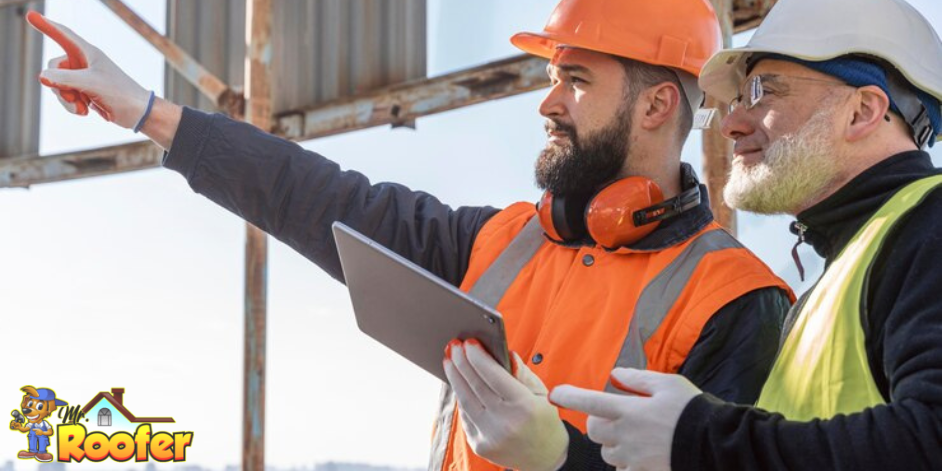

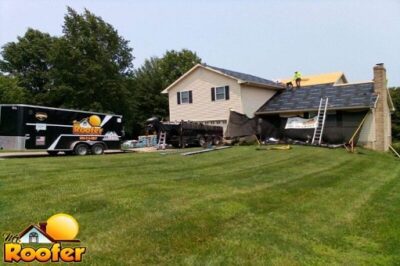
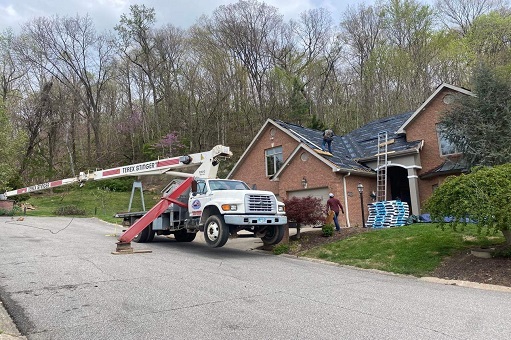
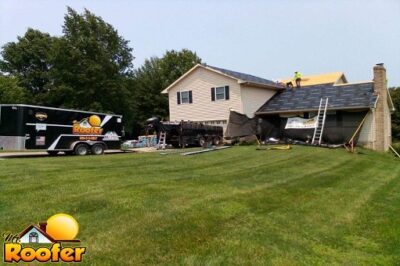
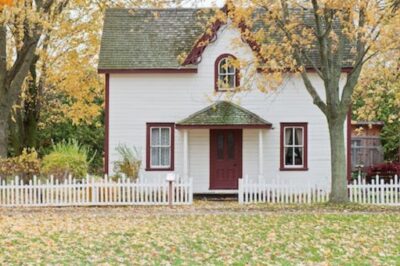
0 Comments